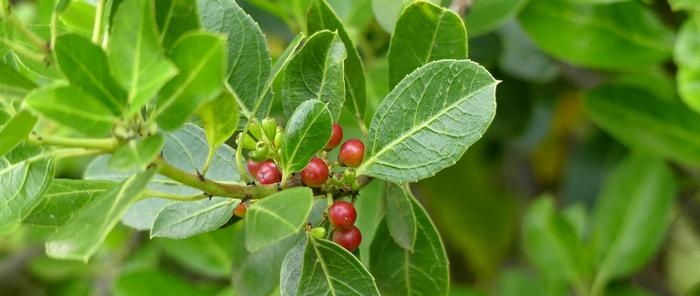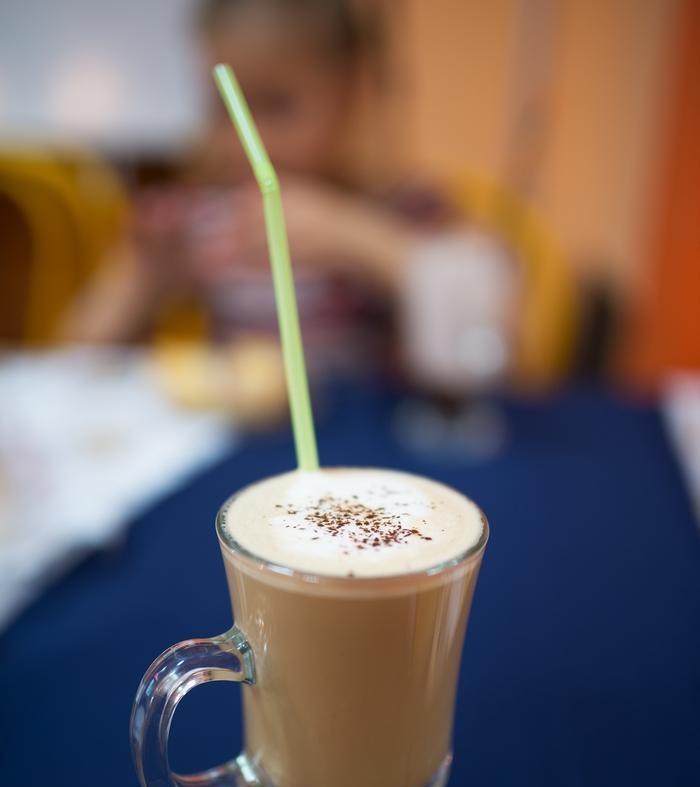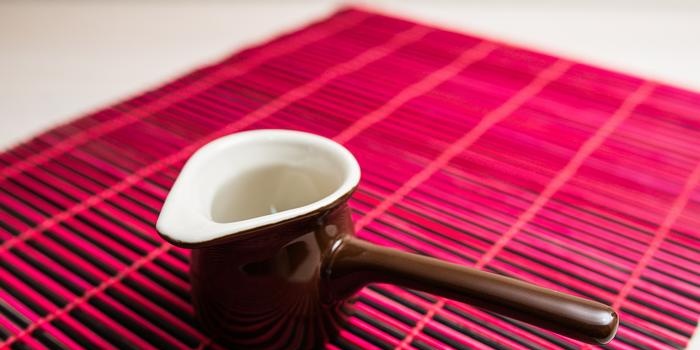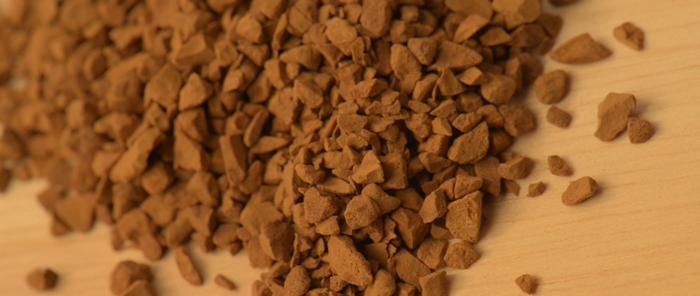A coffee tree |
|
A coffee tree with tall trees does not dare to compete. It grows with them in the neighborhood, but chooses places that are not very shady. If it settles in the shade, it rarely blooms and almost does not bear fruit. The branches are horizontal. The leaves on them also stick out horizontally, opposite each other. And in the axils of the leaves - fluffy white flowers with the scent of jasmine. The tree blooms almost all year round. Ripe fruits hang interspersed with flowers.
But the forests on the island have thinned out, they hardly recover. Lemurs are leaving the forests. Will Bertrandi's coffee go too? But it is unusual: there is no caffeine in the seeds, and this is so important for those who love a fragrant drink, but who are not happy with caffeine.
The great French writer made his own coffee. A great lover of this drink was also Johann Sebastian Bach - the famous German composer, who even wrote a special "Coffee Cantata". The most important component of coffee is a special chemical - an alkaloid - caffeine. It serves as the main stimulating component of the action of coffee: it expands the vessels of the brain, enhances blood circulation in them, and improves the supply of oxygen to tissues.
The aroma of roasted coffee is due to a whole bunch of organic substances, the totality of which is conventionally defined by the term "caffeol". This complex bouquet includes valeric acid, acetaldehyde, furfural, methyl alcohol, etc. How to prepare coffee, what should be the drink? Hungarian proverb says:
Admittedly, the most delicious coffee is made by the Arabs. This is due to them with a solemn ritual reminiscent of the tea ceremonies of the Japanese and Chinese. The coffee got its name from the name of the South Ethiopian province of Kaffa. After some time, the coffee tree from Ethiopia was brought to Arabia (present-day Yemen) and here the Arabs called it "qahwa". From Arabia, the coffee tree migrated to Southeast Asia, where the Dutch developed entire coffee plantations on the islands of Java and Batavia. All his subsequent history is associated with South America and, above all, Brazil. The Brazilian port of Santos is considered the "coffee capital".
With incredible adventures, Lieutenant de Clieu brought this seedling to Martinka Island in 1723, where he was planted in the ground. After 2 years, the tree bloomed with white flowers and bore fruit. About a kilogram of seeds, which we call grains, were extracted from the ripe fruits. After 10 years, large coffee plantations grew from them. In a funny way, the coffee tree got to Brazil. In some dispute between the Dutch and the French, the charming Brazilian Pallete was invited to arbitrate. At the farewell reception on the occasion of Nalete's departure, the wife of the Dutch governor, his admirer, as a sign of her affection, put a handful of coffee seeds in a bouquet of flowers for him. It is from them that the coffee culture in Brazil originated. This, in any case, is the assertion of the French journalist Pierre Rondier. One way or another, but Brazil is currently the main coffee producer on earth. In Europe, coffee became famous in 1592 after the Italian physician and botanist Prosper d'Alpino, who accompanied the Venetian embassy to Egypt, described coffee as a medicine. There is evidence that in Russia coffee as a medicine was already in 1665 at the court of Tsar Alexei Mikhailovich.
However, coffee has made its way to humans. Here and there, coffee shops began to open, or, as we now say, cafes. The first coffee shop was opened in London in 1652 under the name "Virginia", and 20 years later the famous Procopio cafe opened in Paris, which later became a meeting place for Voltaire, Diderot, and fontenel. S. G. Andreev Similar publications |
| Princess, Polyanyka, Mamura | Features of nutrition of bulbous plants |
|---|
New recipes
 The coffee tree belongs to the madder family, it is widely cultivated in many countries of the world. Ethiopia is considered the birthplace of this plant, where even now, in the river valleys of the Abyssinian Highlands, at an altitude of 1000-2000 meters above sea level, thickets of a coffee tree can be found. This is an evergreen shrub or tree no more than 8-10 m high.
The coffee tree belongs to the madder family, it is widely cultivated in many countries of the world. Ethiopia is considered the birthplace of this plant, where even now, in the river valleys of the Abyssinian Highlands, at an altitude of 1000-2000 meters above sea level, thickets of a coffee tree can be found. This is an evergreen shrub or tree no more than 8-10 m high. In addition to cultural, there are forty other types of wild coffee on Earth. Most are African. There are also Asian ones. Not everyone uses human intercession. Especially Bertrandi's coffee with
In addition to cultural, there are forty other types of wild coffee on Earth. Most are African. There are also Asian ones. Not everyone uses human intercession. Especially Bertrandi's coffee with  It's hard to say who, how and when found the coffee. The story is told of a Kaldi shepherd who was the first to notice that the goats were dancing an intricate dance. The four-legged behavior surprised him. I began to observe. I found out: they dance when they eat the red fruits of the coffee bush. I tried it myself - I liked it, it refreshed. And it poured in such a charge of energy that the shepherd himself began to dance.
It's hard to say who, how and when found the coffee. The story is told of a Kaldi shepherd who was the first to notice that the goats were dancing an intricate dance. The four-legged behavior surprised him. I began to observe. I found out: they dance when they eat the red fruits of the coffee bush. I tried it myself - I liked it, it refreshed. And it poured in such a charge of energy that the shepherd himself began to dance. The taste of coffee depends on the variety and its origin. Raw grains have an unpleasant astringent taste and are odorless. They acquire their taste and aroma after roasting.
The taste of coffee depends on the variety and its origin. Raw grains have an unpleasant astringent taste and are odorless. They acquire their taste and aroma after roasting. The relocation of coffee to the American mainland and coastal islands is quite curious.The fact is that the Dutch vigilantly guarded their coffee monopoly and, on pain of death, prohibited the export of coffee trees. But once, as an exception, they sent a potted coffee tree to the French king Louis XIV. It was transferred to the Parisian botanical garden, where, with great difficulty, a seedling was grown from its seeds.
The relocation of coffee to the American mainland and coastal islands is quite curious.The fact is that the Dutch vigilantly guarded their coffee monopoly and, on pain of death, prohibited the export of coffee trees. But once, as an exception, they sent a potted coffee tree to the French king Louis XIV. It was transferred to the Parisian botanical garden, where, with great difficulty, a seedling was grown from its seeds. At first, desperate propaganda was waged against coffee, all sorts of absurdities were invented, such as that Minister Colbert burnt his stomach while drinking coffee. The priests argued that coffee is a Turkish drink and that Catholics should not drink it.
At first, desperate propaganda was waged against coffee, all sorts of absurdities were invented, such as that Minister Colbert burnt his stomach while drinking coffee. The priests argued that coffee is a Turkish drink and that Catholics should not drink it.









